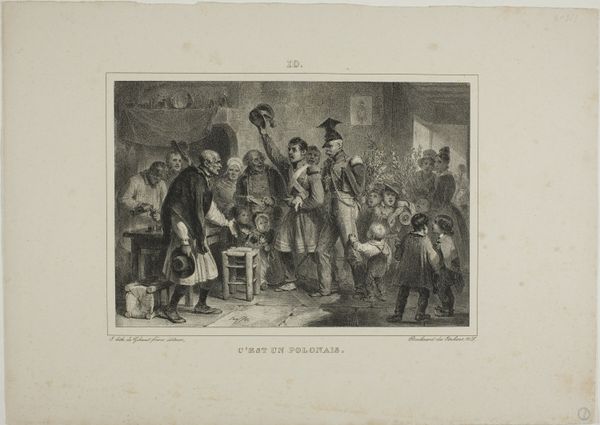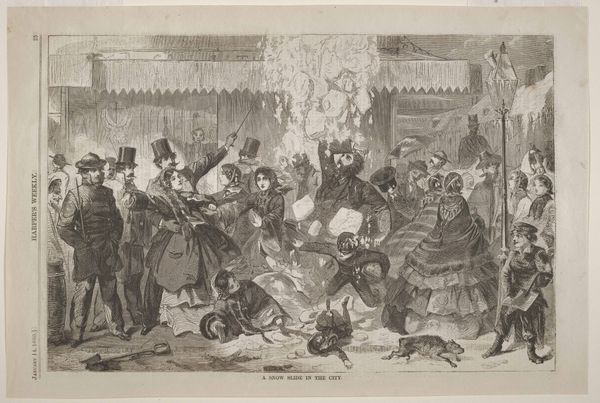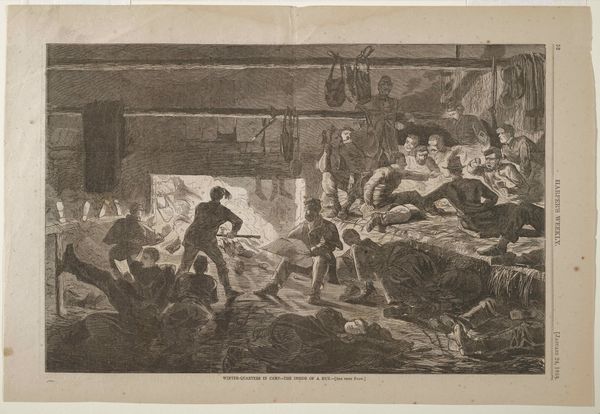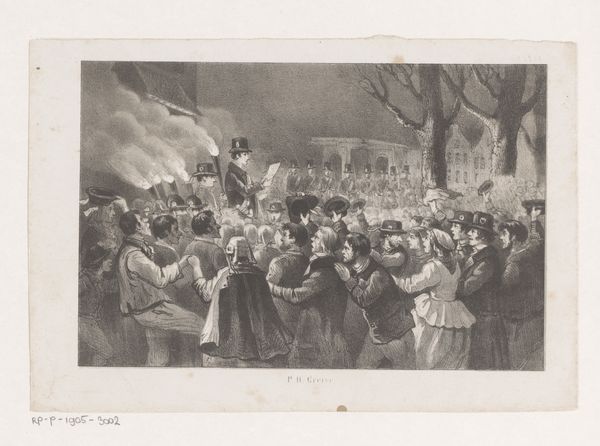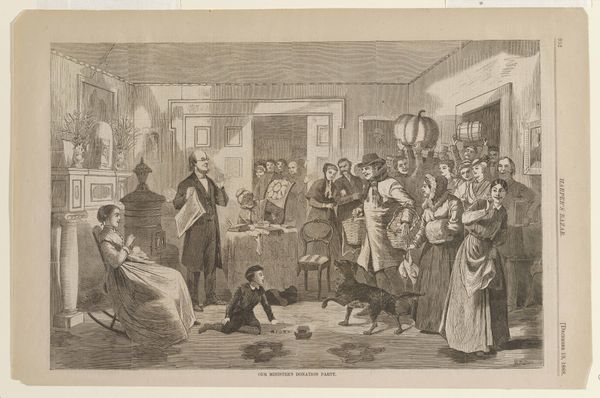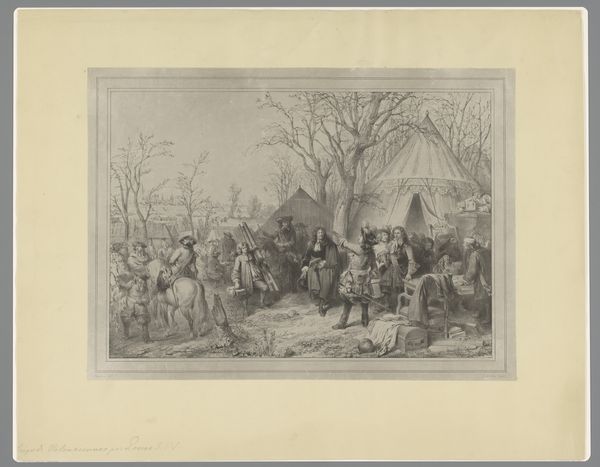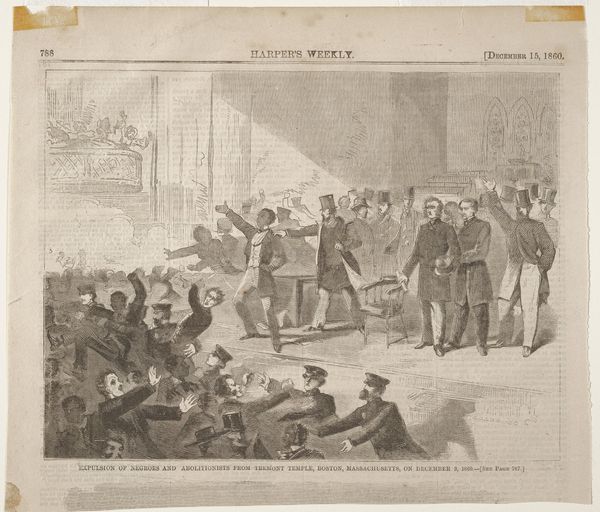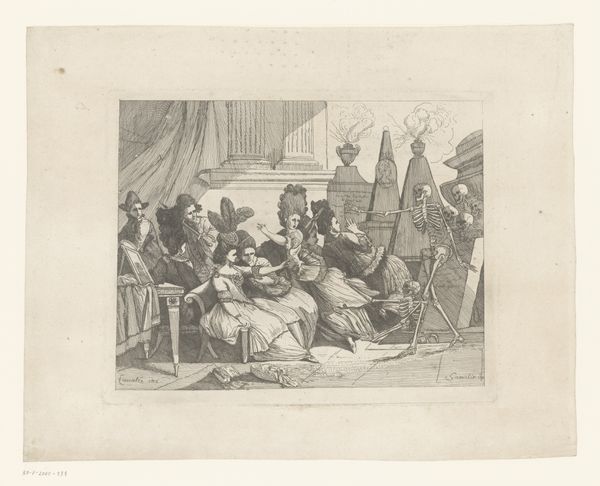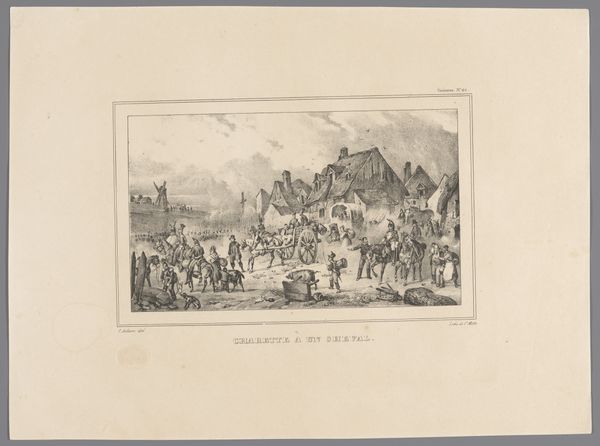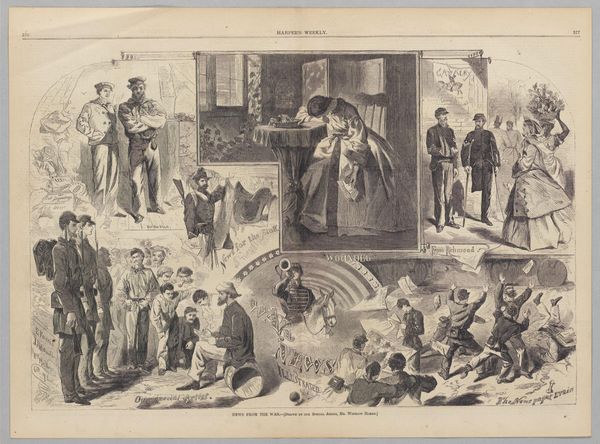
print, etching, paper, pencil
#
narrative-art
# print
#
etching
#
landscape
#
figuration
#
paper
#
romanticism
#
pencil
#
genre-painting
#
realism
Dimensions: height 293 mm, width 368 mm
Copyright: Rijks Museum: Open Domain
Curator: This etching from 1827 by Auguste Raffet, titled "Children During a Snowball Fight," bursts with a delightful chaos. Editor: It certainly does. There's such a raw, uninhibited energy radiating from it; it's almost like you can hear the delighted screams of the children as the snowballs fly! The monochrome really amplifies the intensity of the scene. Curator: It's fascinating how Raffet captures that fleeting moment of pure, childish joy and aggression. Note how the artist, using pencil on paper, is able to focus on each figure with particular expressiveness. Did you know Raffet often focused on scenes of military life? Here, he seems to find equal vigor in the mock battle of childhood. Editor: I find the material qualities equally telling. The paper Raffet employed likely wasn’t a luxury item. Printmaking, with its reproducibility, democratized access to art in a way painting couldn’t. The use of etching allowed for that beautiful textural complexity; the dense layering creates depth. The labor-intensive nature of printmaking, creating and re-striking the copper plate to ensure distribution of imagery, feels far removed from a solitary painting studio, but integral to social life. Curator: Absolutely! This echoes his style rooted in realism and romanticism. Even in what seems a simple genre scene, there is drama, and each child almost a tiny hero in their snowy battle. Editor: Right, that romantic spirit also ties into the material consumption aspect of art. How were these prints consumed, dispersed into bourgeois homes? Did families engage differently with readily available, more reproducible imagery than with singular fine artworks? This etching’s strength relies on it reflecting that social dynamic back to the viewer. It underscores not just "art", but how art shapes communities and individual imaginaries through production and circulation. Curator: You know, considering how much this work illuminates aspects of production of art in social life, next to the delightful childish anarchy and artistic accomplishment, makes me appreciate it even more! It speaks of the accessibility, the potential of art for a broader audience, that echoes even now. Editor: Exactly. And by thinking about the print, paper, and its making, we realize there’s another story hiding, right under the surface. It pushes one to ask more profound questions about how the artwork gets out there into the world.
Comments
No comments
Be the first to comment and join the conversation on the ultimate creative platform.
